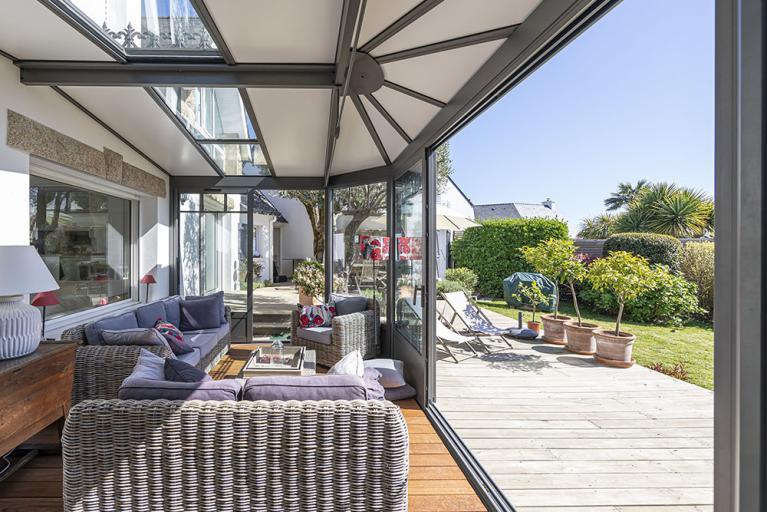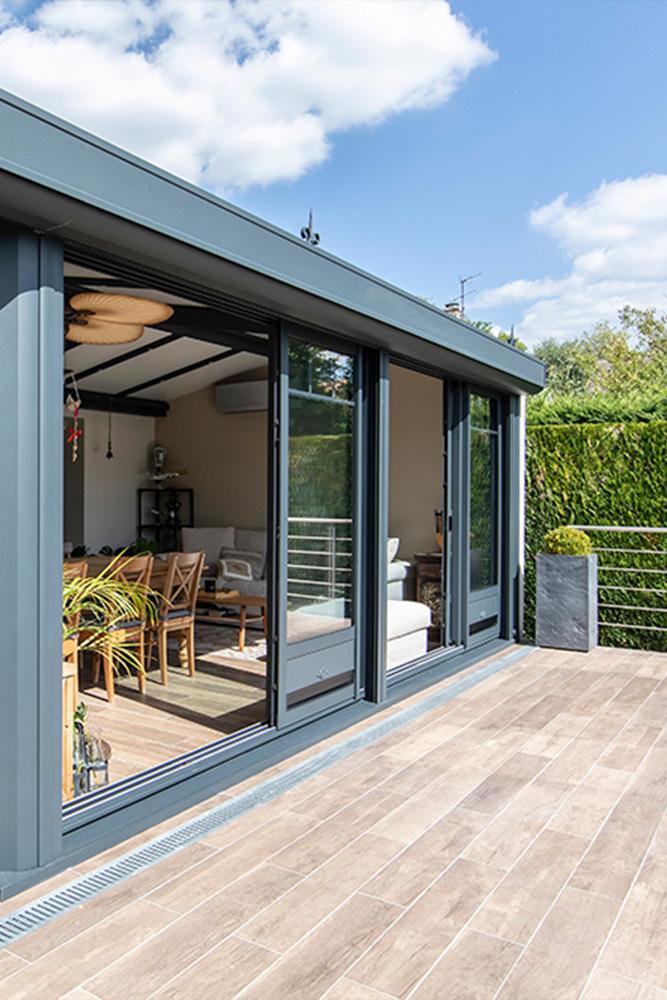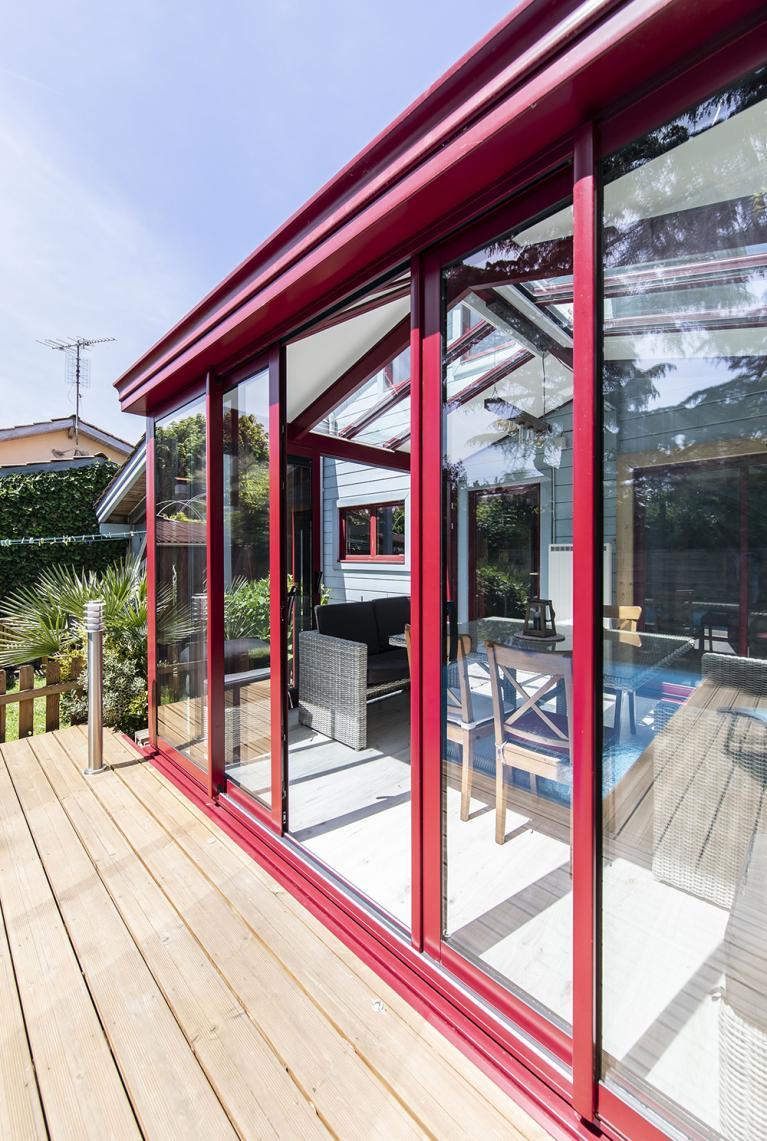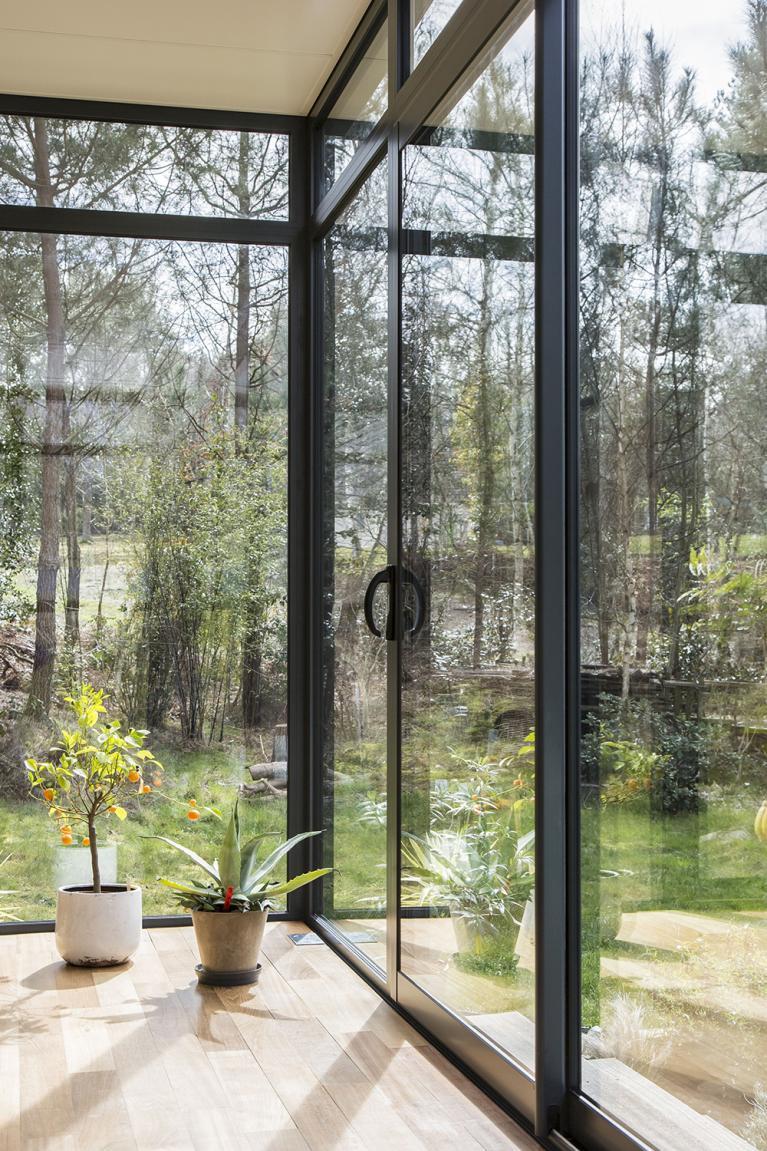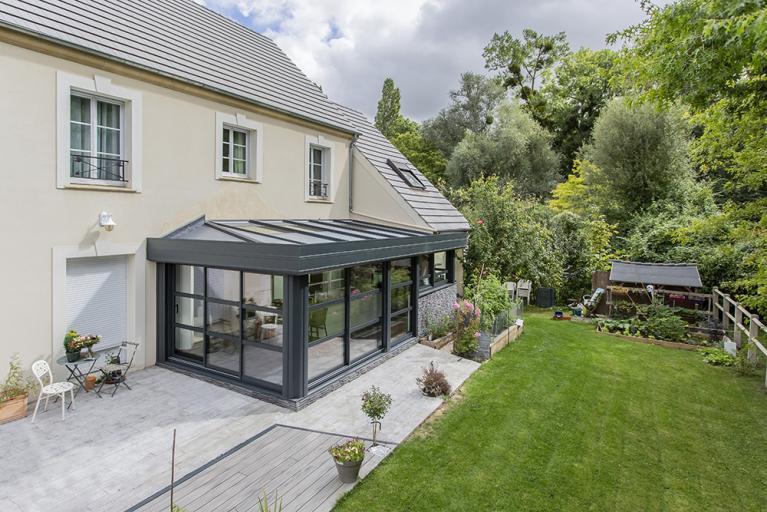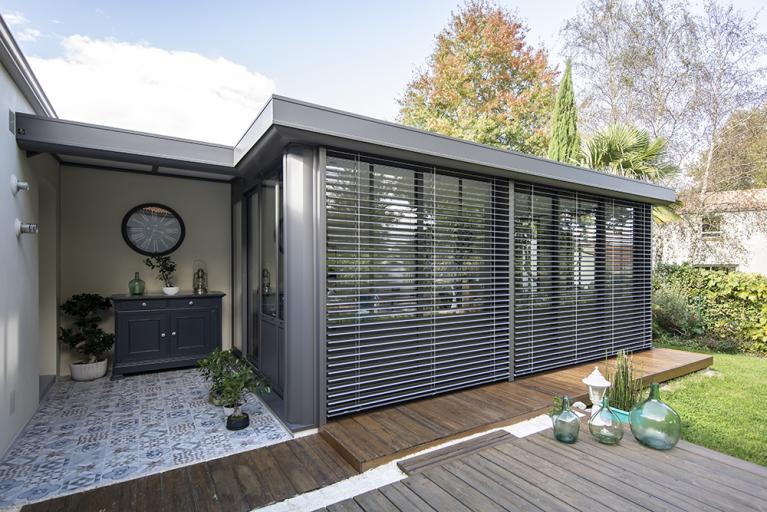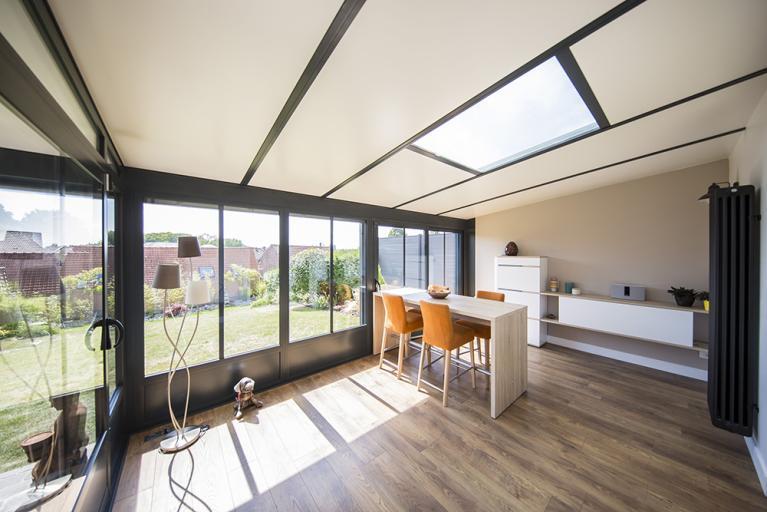Definition of a conservatory: what exactly does it mean?
The term ‘ conservatory ’, often used in the field of outdoor design, conjures up images of relaxation, conviviality and connection with nature. But what is the origin of this concept? How does it differ from other similar spaces such as pergolas or terraces? And finally, what does it mean? The conservatory is much more than a glazed extension to a house! History, features, benefits: AKENA shows you how this intermediate living space, halfway between indoors and outdoors, can transform your home into a veritable haven of peace.
What does it mean? The conservatory defined
To understand the meaning of the term ‘conservatory’, we first need to look at its origins. Initially, it referred to a wooden balcony or terrace protected by a roof, used in warm countries to shelter from the sun, particularly in Asia. Over the centuries, the conservatory became increasingly popular in European countries such as France and England, where it became a popular architectural feature for houses and villas, symbolising both indoor comfort and openness to the outside world.
But what qualifies as a conservatory today? A conservatory is a glazed architectural structure that opens onto the garden. In principle, it must be attached to a wall of the house, and cannot be set up independently in the middle of a green space. Offering an additional living space bathed in natural light, it is often used as a lounge or dining room. It also stands out for its ability to create a gentle transition between indoors and outdoors, while remaining sheltered from the elements.
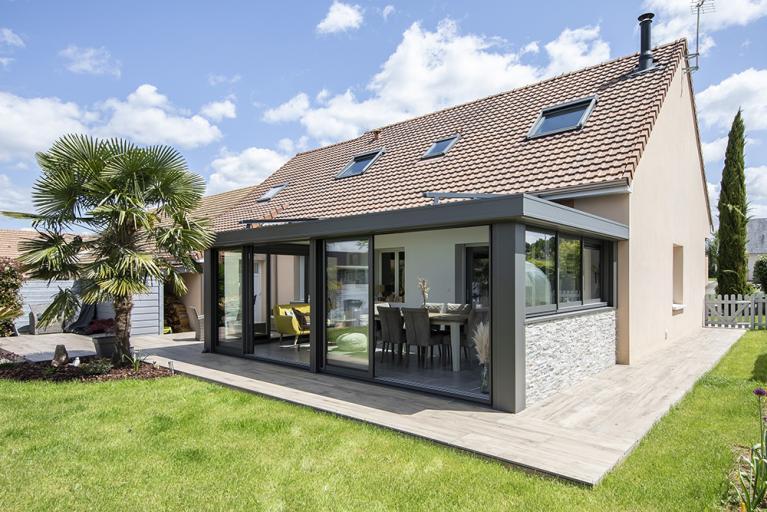
What is the purpose of a conservatory?
A conservatory provides a versatile additional room that combines the benefits of both indoors and outdoors. As mentioned above, it maximises the entry of natural light thanks to its large glazed surfaces, creating a friendly, light and airy space. Its ability to give the impression of being outside, while providing the comfort and protection of an indoor space, means that it can be used to create a wide range of living spaces.
Conservatories can be used in a variety of ways, depending on the needs and desires of their owners:
- a relaxation area ;
- a summer kitchen
- a dining room
- an additional living room;
- a winter garden;
- or a children's playroom.
What are the different types of conservatory?
Opting for a conservatory also means having the option of adapting its appearance to a number of different styles. In fact, each type of conservatory offers specific advantages, and can be adapted to meet the particular needs of the occupants while blending in with the architectural appearance of the house. In other words, it's an ideal solution for those looking to enlarge their living space without compromising the design of their home.
At AKENA, for example, we offer :
- The traditional conservatory: inspired by traditional looks, often with ornamental details and refined contours. Suitable for older houses or classic-style homes.
- The modern conservatory: clean, minimalist design, with straight lines and modern materials. Perfect for newer homes and new builds.
- The bioclimatic conservatory: equipped with adjustable slats on the roof to regulate temperature and light, this is an ideal option for people looking to maximise thermal comfort and light management.
- The conservatory: with large glass surfaces and a glazed roof. It's an opportunity to create a bright, open atmosphere, reminiscent of lofts and artists' studios, while adding a chic, industrial touch.
Find all our conservatory models here.
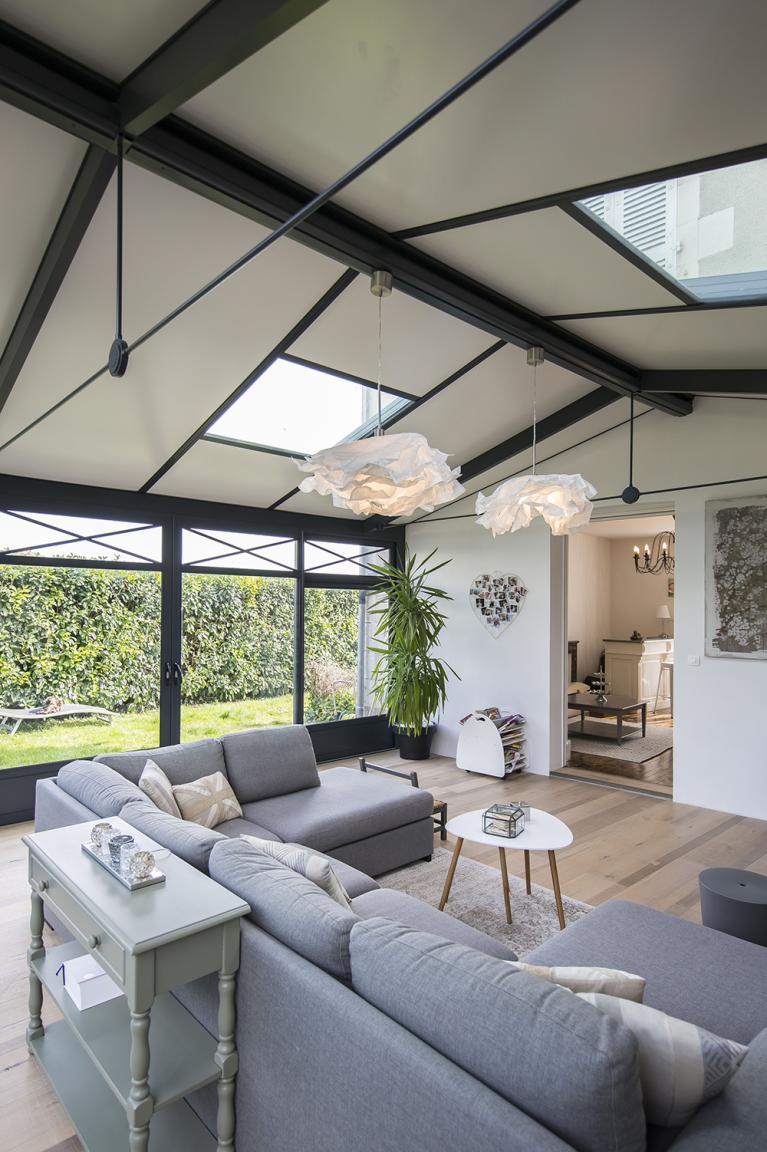
What materials are used to build a conservatory?
Aluminium is often the material of choice for conservatories because of its many qualities. Lightweight and durable, this material is also resistant to corrosion, making it the preferred choice for an exterior structure. Aluminium requires little maintenance, and can be customised with a variety of finishes and colours to suit different architectural styles.
Wood also appeals to many thanks to its warm, natural feel. At AKENA, we combine the traditional aesthetics of wood textures with the security provided by aluminium.
Glass also plays an essential role in the design of conservatories, particularly for the walls and roofs. By letting in a lot of natural light, it creates a bright and pleasant space, while offering a panoramic view of the outside. In addition, glazing options improve the thermal and acoustic insulation of the room, making the space comfortable in all seasons.
What are the advantages of enlarging your home with a conservatory?
Enlarging your home with a conservatory also means enjoying a host of practical and aesthetic benefits. Here are some of the main benefits
- an increase in living space thanks to the creation of an extra room that can be used for a variety of purposes;
- more natural light in the home, thanks to its large glazed areas;
- a real connection with the outdoors, where you can enjoy beautiful views of the garden and surrounding countryside while remaining sheltered from the elements;
- an increase in the value of the property, making it more attractive to future buyers;
- Improved thermal comfort, thanks in particular to technological advances in glazing and insulation that allow the property to be used all year round;
- a high degree of customisability, with the possibility of adding equipment and numerous options to ensure harmony with the existing property.
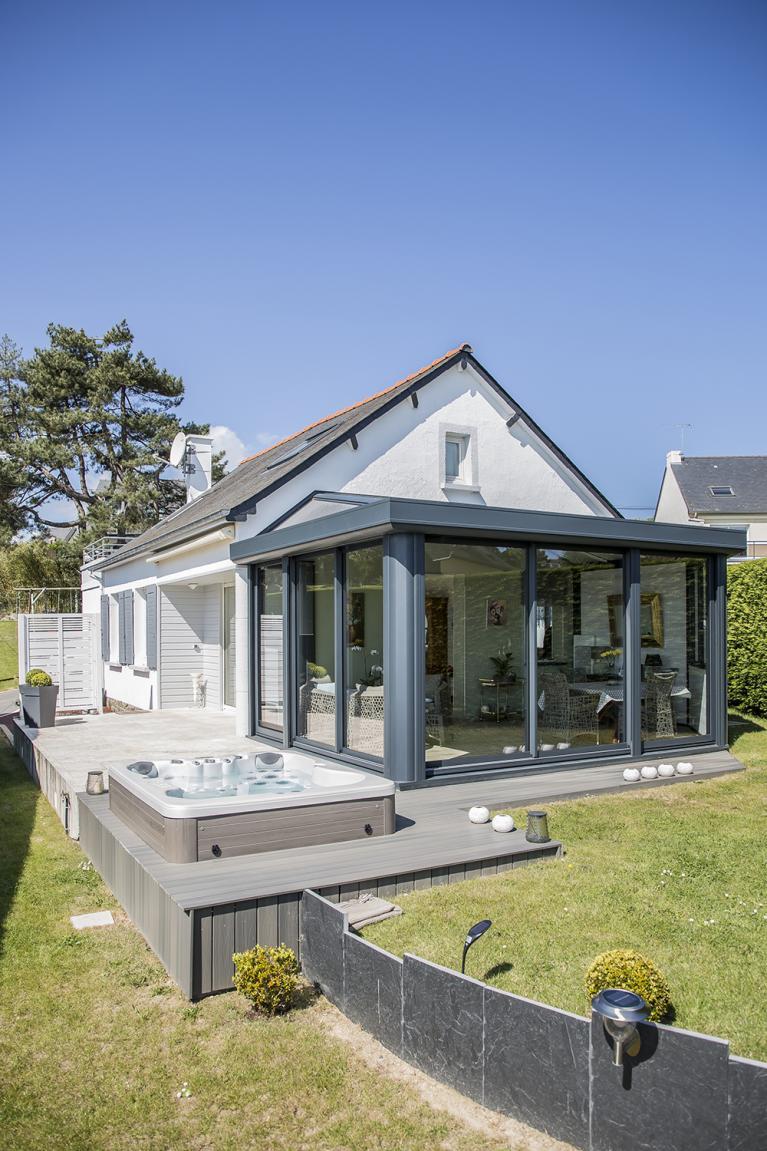
Building your aluminium conservatory with AKENA
You've got it: these days, choosing to install a conservatory at home means choosing a solution that's aesthetically pleasing, durable and functional.
AKENA, a recognised specialist in the field, offers customised solutions that are made in France and come with a 10-year guarantee. We offer made-to-measure designs that blend in perfectly with the architecture of your home, and a wide range of options to enhance the comfort of your future living space.
Ask for a quote, and transform your home with an AKENA conservatory to rediscover the pleasure of living in harmony with nature and your lifestyle! Our specialists will be with you every step of the way.
Find all the articles in the magazine
You have a project?
Would you like a personalised 3D study and a free quotation? Contact us by clicking below.
AKENA is...
Over 40 years of experience
Founded in 1981 by one man, we now have more than 500 employees dedicated to making your project a success.
Made in France
A historic site and two factories covering more than 25,000 m² in Dompierre-sur-Yon in the Vendée region (85)
Innovative and tailor-made products
At AKENA, we are brimming with new ideas to improve and enhance our products.
The European leader in conservatories, pergolas...
But not only! AKENA also offers a complete range of carports and pool houses.

